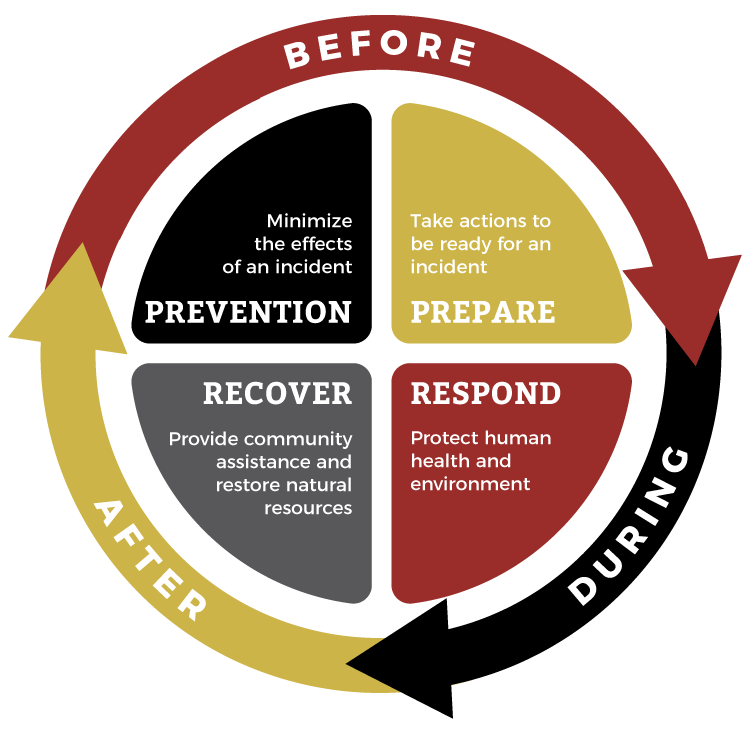
What kind of spills or chemical releases may happen on or near your Tribal lands?
It is important to know what hazardous substances are stored in your community and what hazardous substances may travel through your community. Within the four-phase emergency management cycle (prevention, preparedness, response, and recovery), local knowledge and preventive interventions can greatly affect the likelihood and effects of a spill or release.
See EPA’s Chemical Emergency Preparedness and Prevention on Tribal Lands.
Identifying Sources of Potential Spills and Releases
Tribes can increase their resilience to a hazardous materials incident by reducing the likelihood and minimizing the effects of a release. Prioritizing preventive interventions will be determined by Tribal capacity and assessing risk. After identifying all sources of potential spills and releases, the Tribe can develop a plan that may include actions such as:
-
- learning about the hazardous materials transported through the community(s) and having access to appropriate spill response equipment,
- receiving information/reports on hazardous materials at facilities on Tribal land and conducting facility inspections,
- receiving spill notifications when they occur (see application to receive National Response Center reports),
- working with local school and clinic laboratories to increase safety planning, awareness, and training in the safe use of chemicals,
- worker education regarding the safe loading, handling, and disposal of hazardous materials.
The examples above have been provided as a starting point for the development of this webpage. Please consider submitting additional examples and Tribal case studies to TLAC@nau.edu or use the TLAC Contact Form to share here.
Related TLAC Webpages
Additional Websites of Interest
EPA’s Emergency Response Webpage
NRC Application to Receive Spill Notification Reports
Mechanisms of and Facility Types Involved in Hazardous Materials Incidents (1997 study)
EPA’s Emergency Planning and Right to Know Act (EPCRA) in Indian Country
US Department of Transportation’s Pipeline and Hazardous Materials Safety Administration
